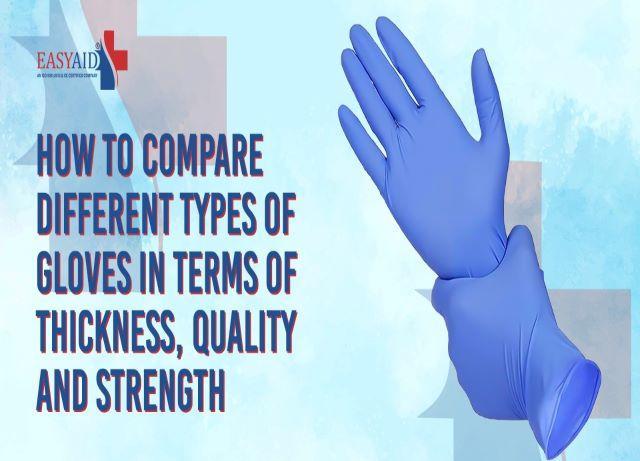Workers’ safety is important. We only have one pair of hands on which we depend daily. It is critical to have the greatest hand protection available.
When comparing the many forms of hand protection, it might not be easy to discern the differences and discover which one best suits your needs. Furthermore, most hand protection providers fail to describe all the complicated aspects of making a glove. They utilize industry terminology and expect you to understand what they’re saying.
This post will explain the terms used in the industry and give you a handy list to keep in mind as you look for the best gloves for your needs. Every situation and glove is different, so if you have even the slightest doubt that the glove you are wearing isn’t right for you, don’t be afraid to talk to a healthcare product specialist who is highly trained to find the best fit for every situation.
Comparing the Thickness of Gloves
When figuring out how thick the glove is, it’s important to remember that different measurement points can give you very different results. For example, measurements of thickness taken at the fingers will always be much higher than those taken at the palm.
It is best to measure the palm of the glove. However, not everyone does, so comparing gloves only on spec sheets fails. You must put your hands on the gloves to feel the difference.
How to compare the strength of the gloves
There is no standardized test for determining and comparing glove strength. Strength may be defined in various ways, depending on the situation. Because gloves are needed in many jobs for different kinds of protection, it’s hard to use a single criterion to judge how “strong” a glove is. That is why EN standards were developed. The EN standards test for several risks, which we may use to assess how strong a glove is. Puncture resistance, tear resistance, abrasion resistance, cut resistance, and chemical resistance are the best ways to measure a glove’s strength.
How to measure and compare puncture, rip, abrasion, and cut resistance in gloves Without using technical terms, the fundamental concept of these tests is
- Puncture resistance is the ability of the glove to withstand puncture risks—the higher the number, the better the resistance.
- The rip resistance of a glove indicates how likely it is to tear when it comes into contact with snags or pull hazards: the greater the number, the more resistant the glove.
- Abrasion resistance is the ability of a glove to tolerate abrasion threats. The greater the number, the more resistant the glove is against a rough surface.
- Cut resistance measures how effectively a glove can withstand acute cutting threats. The greater the number, the more resistant the glove will be against sharp edges, materials, blades, etc.
Mechanical dangers are an excellent approach to comparing a glove’s “strength.” Chemical resistance is another good comparative tool assessed by the authorities’ specified requirements.
Measuring and comparing chemical resistance of the gloves
Chemical resistance is compared using letters representing typical substances in the intended benchmark.
If a glove passes the letter “A” test, which is Methanol, we may deduce that the glove should be resistant to additional chemicals comparable to Methanol. Visit our glove ratings page to learn about which letter represents which chemical.
Chemical resistance can be determined by comparing the letters assigned to each glove. The more letters there are, the more resistant and strong the glove is against chemical threats.
To sum up, the best way to figure out how thick, reasonable, and strong gloves are is to try them on and see for yourself. Your safety is paramount, so always ensure that a third party, not the company that made the product, did the testing. Unfortunately, many manufacturers do in-house testing, and the findings might be biased or erroneous, putting your hands’ safety at risk. Talk to healthcare product experts if you are worried about how safe your hands are now. They will help you find the right safety solution.



